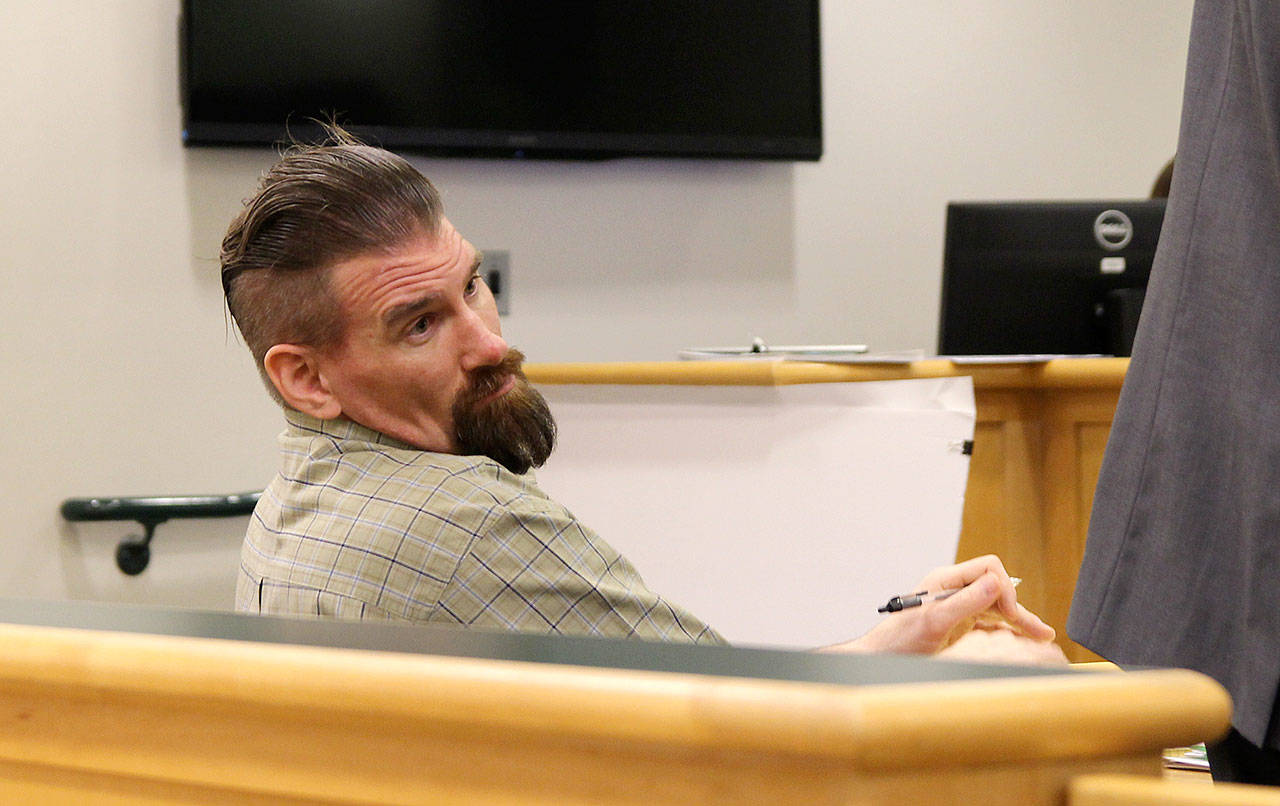A jury in Island County Superior Court this week found a man guilty of vehicular homicide for causing a car accident that killed 18-year-old Keesha Harden of Coupeville two years ago.
The jury, however, was unable to return a unanimous verdict on one “prong” of the charge, which is for causing a fatality while operating a vehicle under the influence of drugs or alcohol.
The jury found Jeromy Ladwig, 35, of Oak Harbor, guilty of the two other prongs of the charge; they found he committed vehicular homicide while driving in a reckless manner and with disregard for the safety of others.
Ladwig will face up to 23 years in prison when he’s sentenced later this year.
Police officers, detectives, medical personnel, toxicology and accident reconstruction experts testified during the two-week trial, which was also marked by some unusual moments. Defense attorney Charles Hamilton of Seattle asked for a mistrial after a juror put up a sign in the jury room referencing zombies, which the juror felt was relevant to the case. Judge Vickie Churchill excused the juror, but then the man placed a bag of dried crickets on the defense table on his way out of the courtroom.
The fatal collision occurred just after 4 a.m., May 2, 2016, on North Whidbey. Ladwig was driving a 2001 Ford Mustang with Harden in the front passenger seat and Randon Koepke in the back seat.
During closing arguments, Island County Chief Criminal Deputy Prosecutor Eric Ohme said the overwhelming evidence shows that Ladwig “blew through” a stop sign as he accelerated out of the parking lot of Joseph Whidbey State Park and drove into the path of a 2004 Dodge Dakota driven by Nathan Dee of Oak Harbor.
“Mr. Dee had no time in which to hit the brakes,” Ohme said. “He had no time to take evasive action.”
Three different tests admitted into evidence showed Ladwig had methamphetamine in his system at the time of the crash.
Dee testified that he was driving to his job at Naval Air Station Whidbey Island when the collision occurred. He said he was traveling at about 40 miles per hour.
“All of a sudden there was a light in front of me,” the former North Whidbey resident said. “A bang and a pop and I was in the ditch.”
The truck ended up on his side. Dee testified that he climbed up and out the passenger door and then flagged down another vehicle for help. He then went to help the occupants of the Mustang, which had rolled into the middle of a field.
“There wasn’t much of a Mustang left,” he said.
He found Ladwig standing outside the driver’s side door. Koepke was trapped in the wreckage of the back seat, trying to wrench his legs free. Dee said he looked down and was “face to face” with Harden, whose face was covered in blood and looked to be in severe pain.
Sgt. Cedric Niiro with the Oak Harbor Police Department was the first law enforcement officer at the scene. He said Harden was bleeding badly from a head wound.
“By the way the door was literally molded around her body, I knew her injuries were significant,” he said.
Niiro said a backpack belonging to Koepke was found in the car. It contained a smoking device and a plastic bag containing a white substance, he said.
Dr. Douglas McKee, an ER physician at WhidbeyHealth Medical Center, became emotional when he testified about treating Harden.
McKee said her heart was pumping but she didn’t have a pulse, likely from internal blood loss from a broken pelvis, so they pumped in fluids as fast as they could. She regained a pulse and was airlifted to Harborview Medical Center in Seattle for treatment, but died from her injuries.
A medical examiner testified about her extensive internal injuries; he said her head injury was fatal.
Ladwig testified in his own defense and gave a different account of the events leading up to the crash than what was described by the prosecution’s witnesses.
Ohme, however, told the jurors that they are the sole judges of the credibility of witnesses.
Ohme pointed out that Ladwig testified that he drives 250,000 miles every six months. Ohme said Ladwig would have to drive 60 mph for the entire six months to achieve that.
In closing arguments, Hamilton questioned the validity of the collision reconstruction and toxicology evidence. He urged the jurors not to be “blinded by science.”
“A measurement is not a sure thing,” he said. “And that’s what this case is about. Measurements.”



